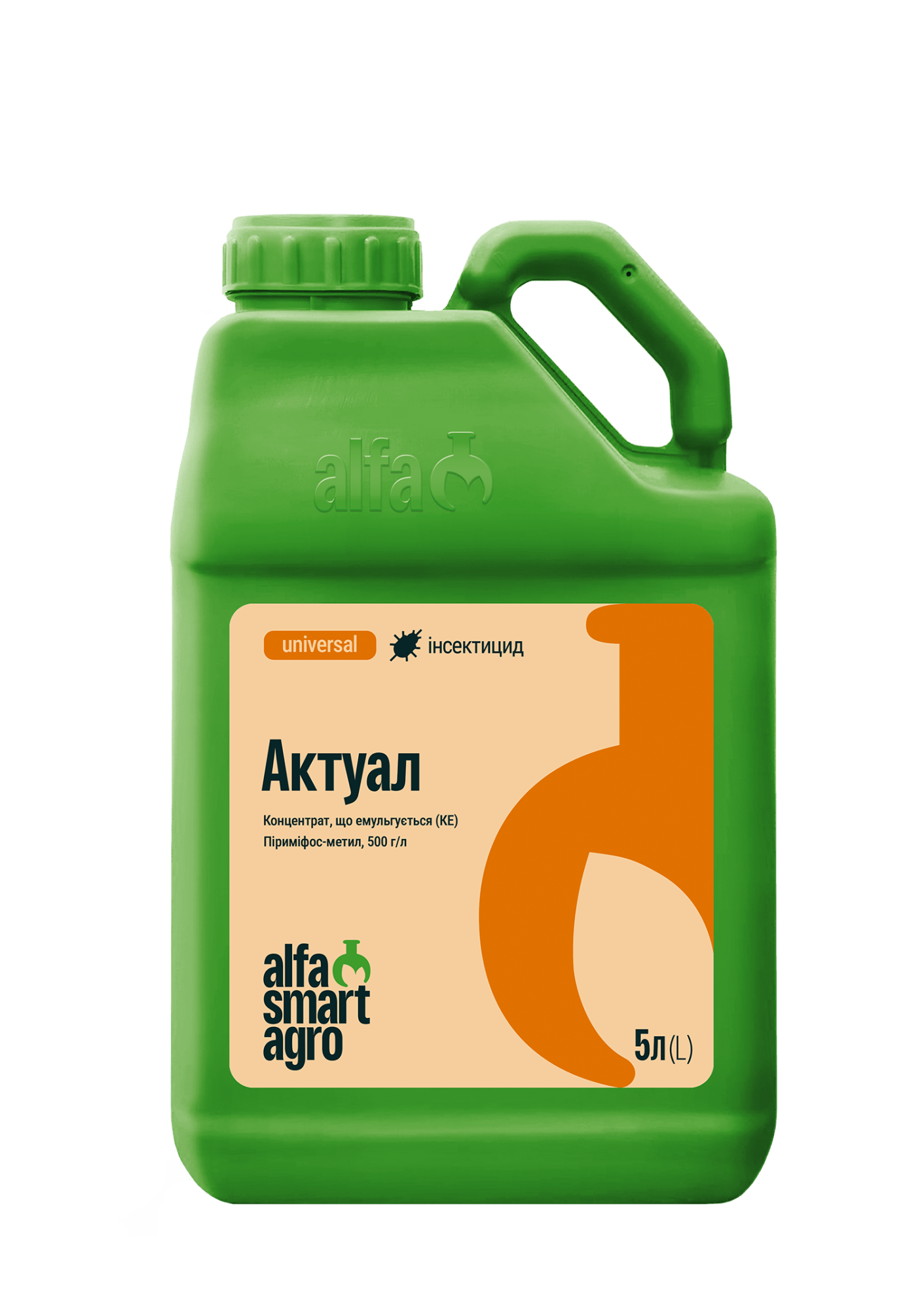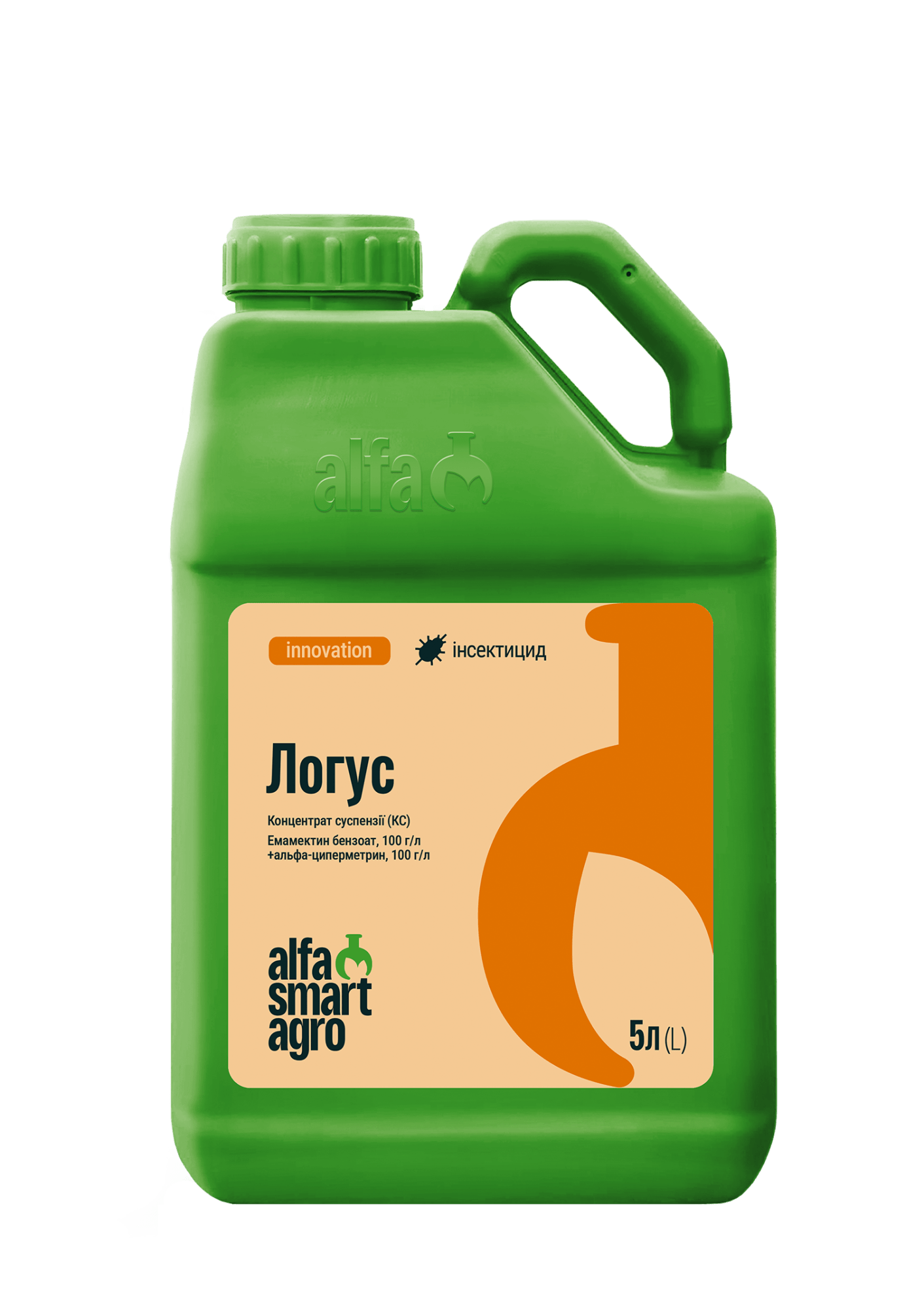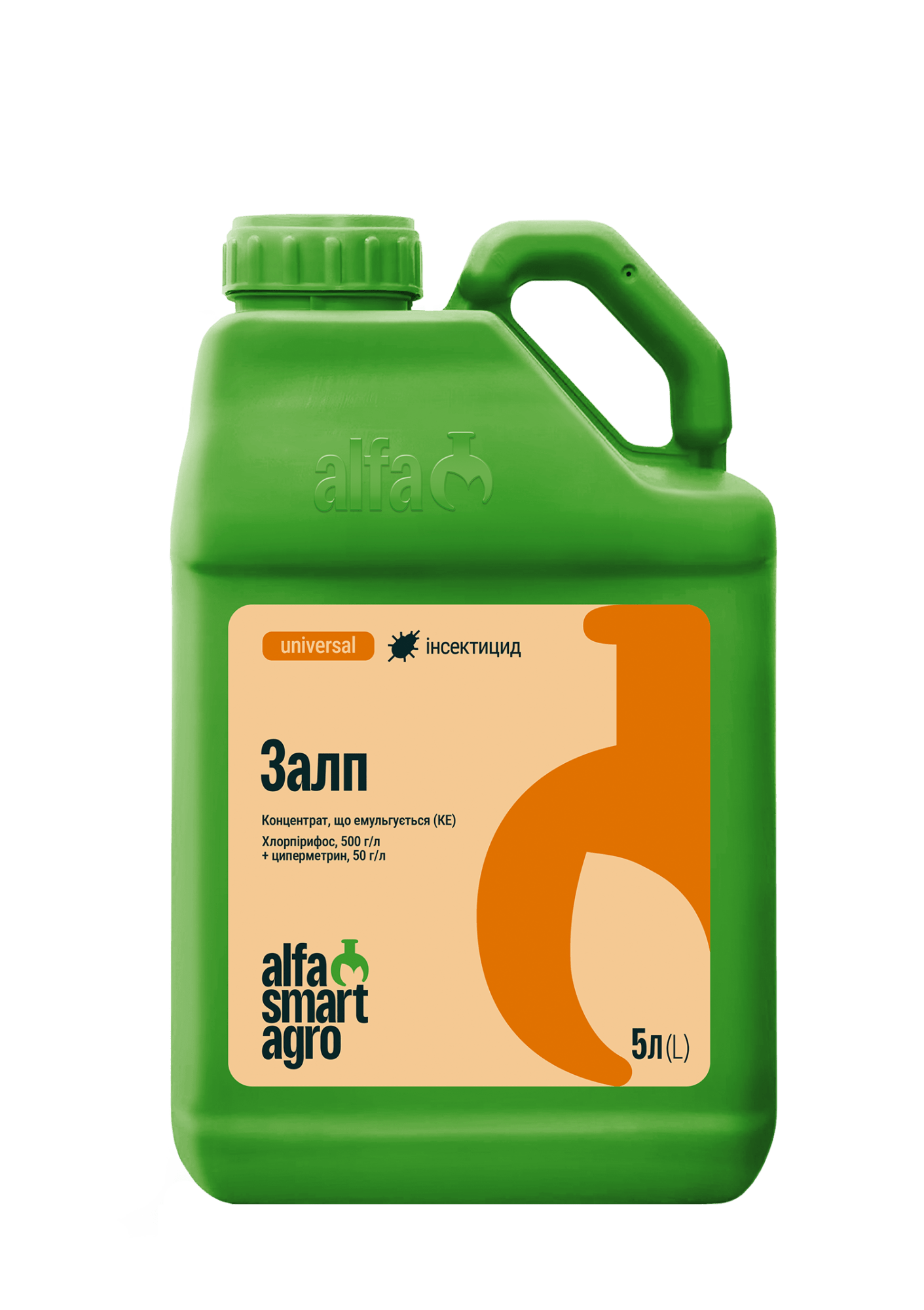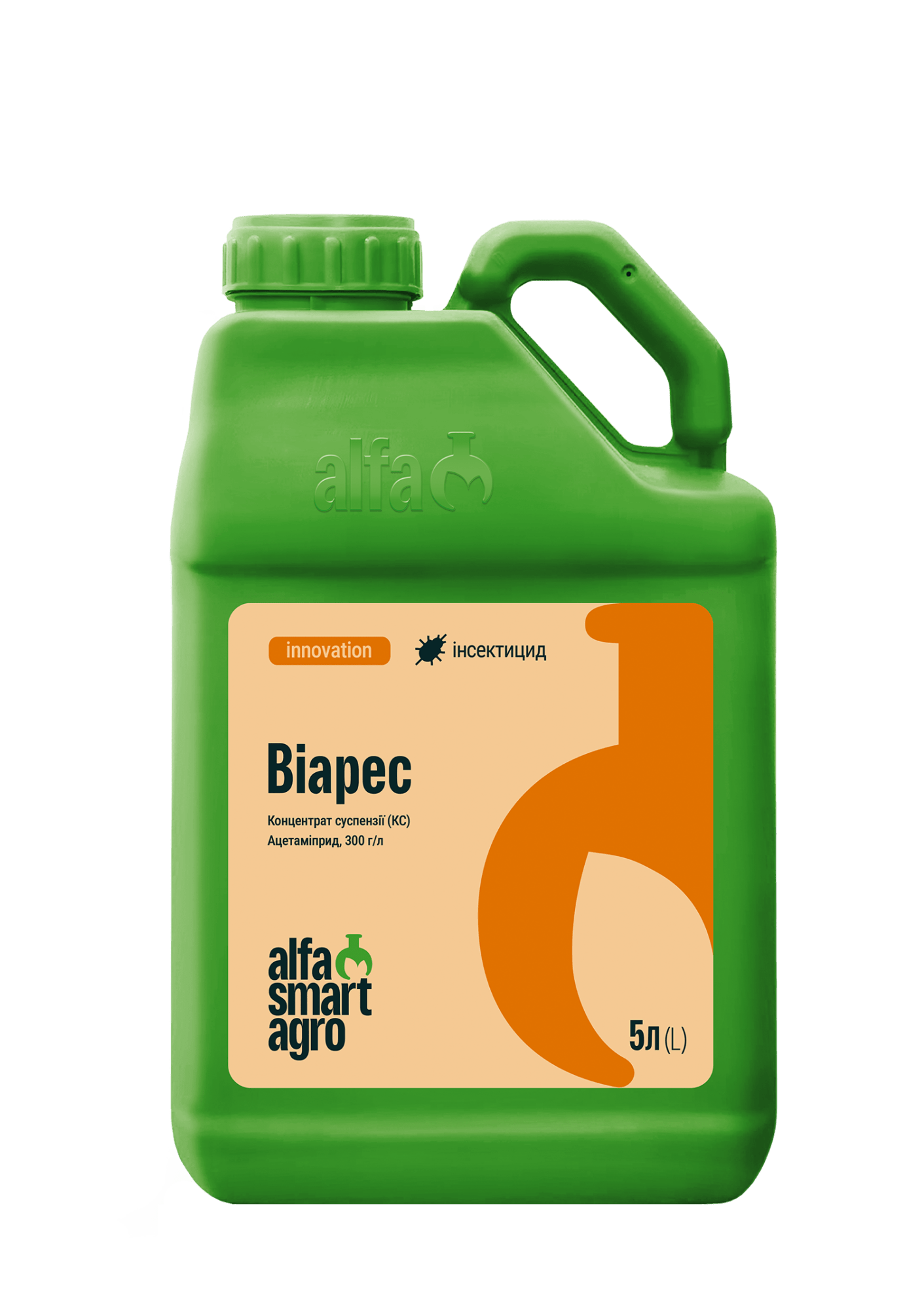Current affairs

Pirimiphos-methyl, 500 g/l
Resistance to high temperatures and low humidity determines the widespread use of the insecticide.
It is advisable to start treatment when the number of pests exceeds the economic limit.
threshold of harm (depending on the type of phytophage). The volume of the working solution should be sufficient to completely cover the entire leaf surface of the crop.
Do not allow the working solution to run off the treated leaf surface.
It is necessary to prevent Aktual from getting into food and feed. It is impossible
Graze livestock on treated areas without observing a waiting period.
It is recommended to treat plants in the morning or evening at an air temperature of +15 °C to +25 °C. The minimum concentration of Aktual in the working solution is 0.1-0.15%. The working solution of the tank mixture should be used on the day of preparation.
- Short waiting time and control of a wide range of pests, which is important for greenhouses.
- Additional acaricidal action inhibits the development of mites.
- Due to the rapid decomposition of the active substance, the treated grain can be used for food and feed purposes (provided that the regulations for hoinging and determination of drug residues are followed).
- It has a contact, translaminar and fumigant action, which allows you to control pests in hard-to-reach places.
Scope and cost norms
(registered in Ukraine)
| Object being processed | Pest | Drug consumption rate, l/ha | Processing time | Waiting period, days | Max. number of treatments |
| Non-agricultural lands | Locusts and other types of harmful insects, as well as ticks | 1,5-2,0 | Spraying during the growing season | – | 1 |
| Cucumbers, tomatoes in closed ground | Whitefly, mites, aphids, thrips, leafminer flies, midges | 3,0-5,0 | 3 | 3 | |
| Unloaded warehouses | Stock pests | 0.04 ml/m³ | Aerosol treatment (20 ml of working fluid per 1 m3), exposure 24 hours | Admission of people and loading of warehouses – after ventilation for 2 days after the end of exposure | 1 |
| 0.5 ml/m² | Wet treatment (200 ml of working fluid per 1 m²)*, exposure 24 hours | ||||
| Food, seed, and feed grains | 16 ml/t | Wet processing (0.5-2 l of working fluid per 1 t of grain) | Sale of grain for food and feed purposes - if the drug residues are not higher than the MRL, for the preparation of baby and diet food - in the absence of pirimiphos-methyl |
Registration is planned for the following facilities:
| Object being processed | Pest | Drug consumption rate, l/ha | Processing method | Waiting period, days | Max. number of treatments |
| Pryskladsk territory | Stock pests | 0.8 ml/m² | Wet processing (400 ml of working fluid per 1 m²) | – | 1 |
| Corn | Corn butterfly | 1,2-2,0 | Spraying during the growing season | – | 2 |
| Sugar beets | Fleas, aphids, mealybugs, weevils | 1,0-2,0 | 20 | ||
| Cucumbers and tomatoes in open ground | Whitefly, mites, aphids, thrips | 0,3-1,5 | 20 | ||
| Cherry, sweet cherry | Cherry fly | 0,8-1,2 | 20 | 1 | |
| Peach | Eastern fruit fly, aphids | 50 | |||
| Eggplants | Colorado potato beetle, aphids | 0,8 | 20 | 2 | |
| Sweet pepper | 0,3-1,5 | ||||
| Blackcurrant, gooseberry | Fireflies, mealybugs, sawflies, leafhoppers, scale insects, aphids, beetles | 1,5 | Spraying before flowering and after harvest | – | |
| Strawberries, raspberries | 0,6 | ||||
| Ornamental crops for open ground | Leafhoppers, aphids, mites, thrips | 0,5-1,5 | Spraying during the growing season | 20 | 4 |
| Mushrooms (substrate) | Mosquitoes, flies | 0.5 ml/m² | Spraying the substrate | 25 | 2 |
*Rate of working fluid used when wet-treating unloaded warehouses, depending on the type of surface: metal – 30 ml/m², plaster – 70 ml/m², wood/cement – 50 ml/m², brick – 150 ml/m².




